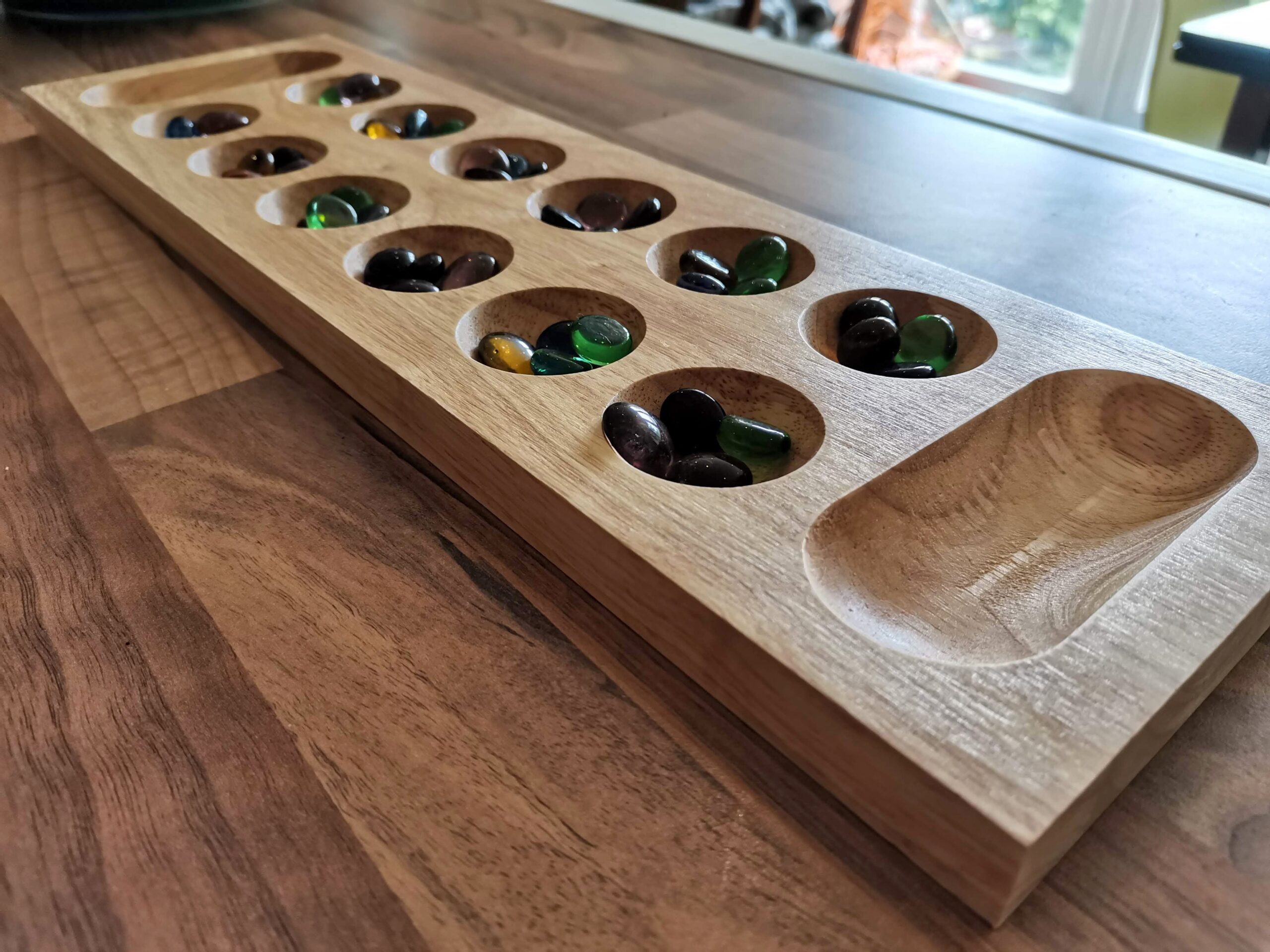Luzon Rails Review

Did you wake up today, and suddenly have the urge to run a railway in the Philippines? No? What if I told you the railways are on Luzon, the largest and most-populous of the Philippine islands? Yeah, I knew it, I knew that’d swing it for you. Luzon Rails is a self-published cube rail game from designer Robin David, where you’ll be buying shares in railway companies, investing in them, laying track, and building industry on the island.
When it comes to railway games, many people immediately think of two different options. First, you’ve got the light-touch brilliance of one of the thousand versions of Ticket To Ride out there, and then you jump straight to the brain-melting, multi-hour domain of the 18xx games. Cube rail games fit somewhere in-between the two extremes. In them players usually invest in railway companies, à la 18xx games, but instead of laying hex tiles showing tracks, players put coloured cubes onto the board instead. There’s a fair bit of divergence in how the games play, but that basic structure is usually the same, and the stock market and investments are easier to handle.
Cubism
My first real exposure to the cube rail games was Ride The Rails, which I still really enjoy. I love how quickly the games play out, considering the amount of thinking, planning and improvisation needed. Being a bit a newbie still, I wondered just how different each game could feel, given that most of them share the same premise of investment, plonking cubes onto hexes, and making railways. Luzon Rails has gone a long way towards showing me that they can be different enough that I want to buy a lot more of these games now.
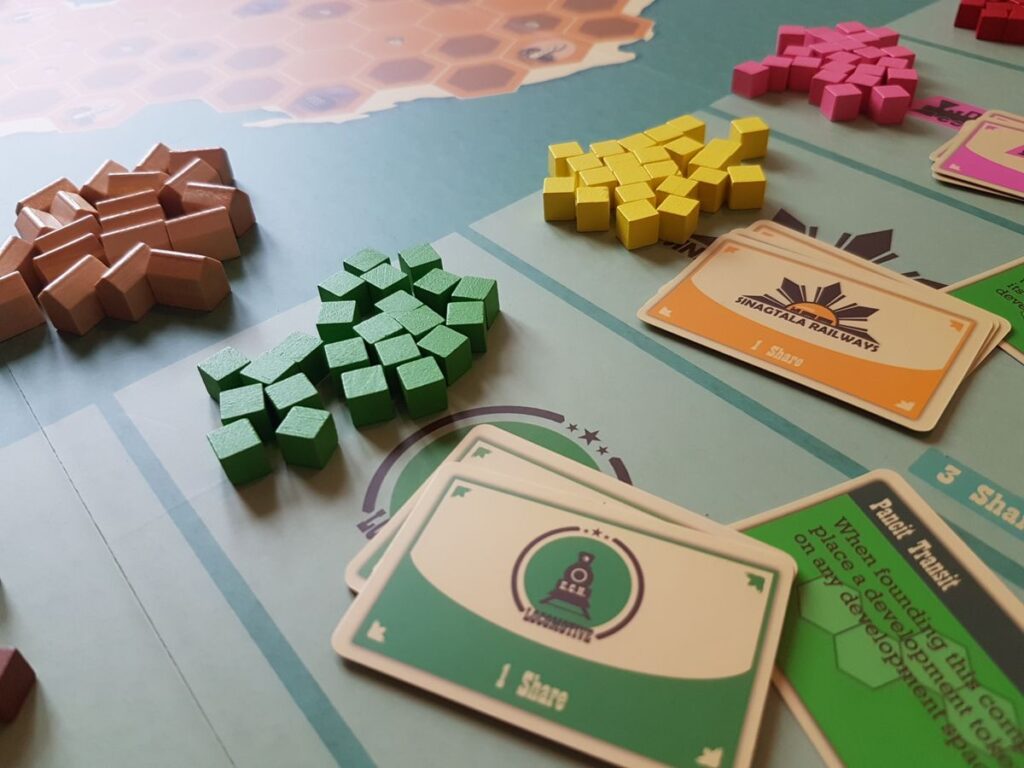
The first thing to mention about Luzon Rails is that it has an auction mechanism. Before the game, players bid against one another for shares in each of the railway companies. You might not think it matters which of the five companies you opt for, but right from the outset there are some really tricky decisions to make. The player who wins the first auction gets to choose which of the five starting spaces on the board they place their first rail cube, and all of your initial plans start from that first space.
Another thing to consider is that not all rail companies are made equally. The number of shares per company, varies. This all means that right from the get-go there’s a lot of playing the people around the table. Gauging what you think they might be trying to do, and where their plans for island domination start and end. I really enjoy these games where the game is so heavily informed by what the players are thinking. It’s not like Dominion, with its Big Money strategy. There’s no right or wrong to go about playing Luzon Rails, all that matters is how you do against your opponents.
Tickets please
Actions in Luzon Rails are triggered by cards. Each player has their own hand of cards, and there’s a bank of seven spaces at the bottom of the board, where a random selection of action cards are placed, face-up, for each round. On your turn you just have to play a card and carry out the action on it, which could be something like build more track, develop an area, auction a share etc. You choose if that card is one of the two you’re holding, or one of the seven at the bottom of the board. You really need to keep your attention on who’s holding how many cards, and how many are on the bottom of the board, because once that seventh card gets played, the round ends. No warning, no ‘one last turn’, it’s straight on to paying dividends and setting up the next round.
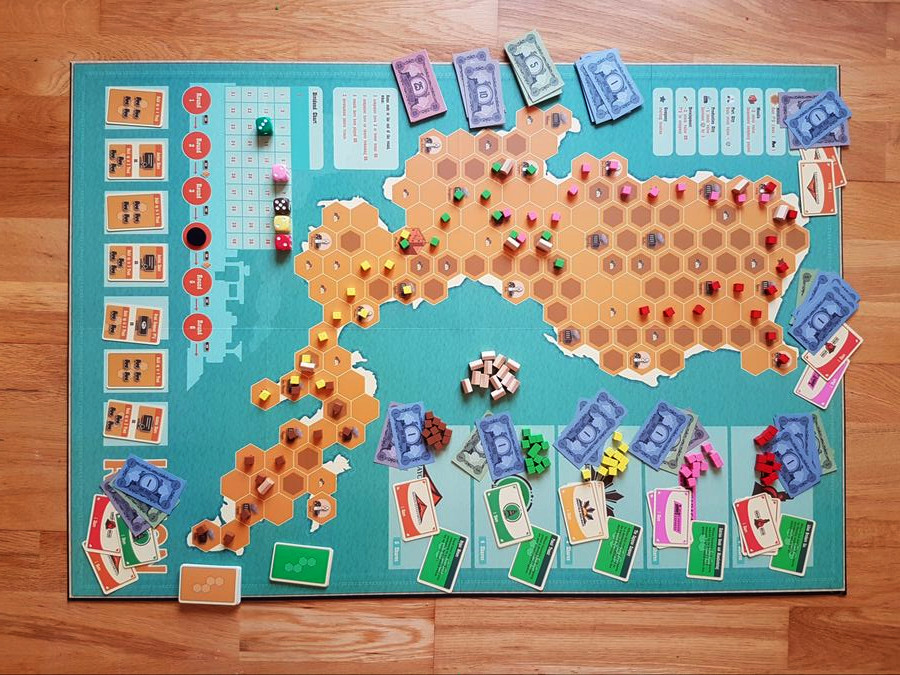
I really like this mechanism. I know there are some railway game fans out there who don’t like the idea of the randomness of cards, and prefer to play with perfect knowledge of what’s going on on the table, but I’ve got to say, I really like it. There’s a terrific tension when there’s only one card left on the board, with shifting eyes trying to gauge who’s going to play it, and who’s going to manage to complete another route before the end of the round and the pay-out. Do you try for one more development for yourself, or trigger the end so someone else can’t?
It can be a little frustrating if the cards you get dealt don’t line up with your plans, because the cards you need might be in the shared pool and at the mercy of other players before you. But that’s just how this game works, and I like it. This style of game can be dominated if you’ve got a player with a very analytical mind, or a lot of experience, and the randomness that the cards introduce can help level the playing field a little. Not always, as everyone’s subject to the same chance, but it’s a nice twist.
Final thoughts
I might not be a cube rails expert, but I know what I like, and I like Luzon Rails. There are some really nice touches in the way the game plays. For example, the dice that track the dividend values can have their values increased by adding track to a production city. That number on the die becomes the value that each jump in dividend value increases by, when you build track in a port city. So it’s possible to build a compact, but really profitable network. Alternatively, if someone is racing away with the lead, there’s nothing to stop you buying shares in their railway and building a track to nowhere in the mountains. Just saying…
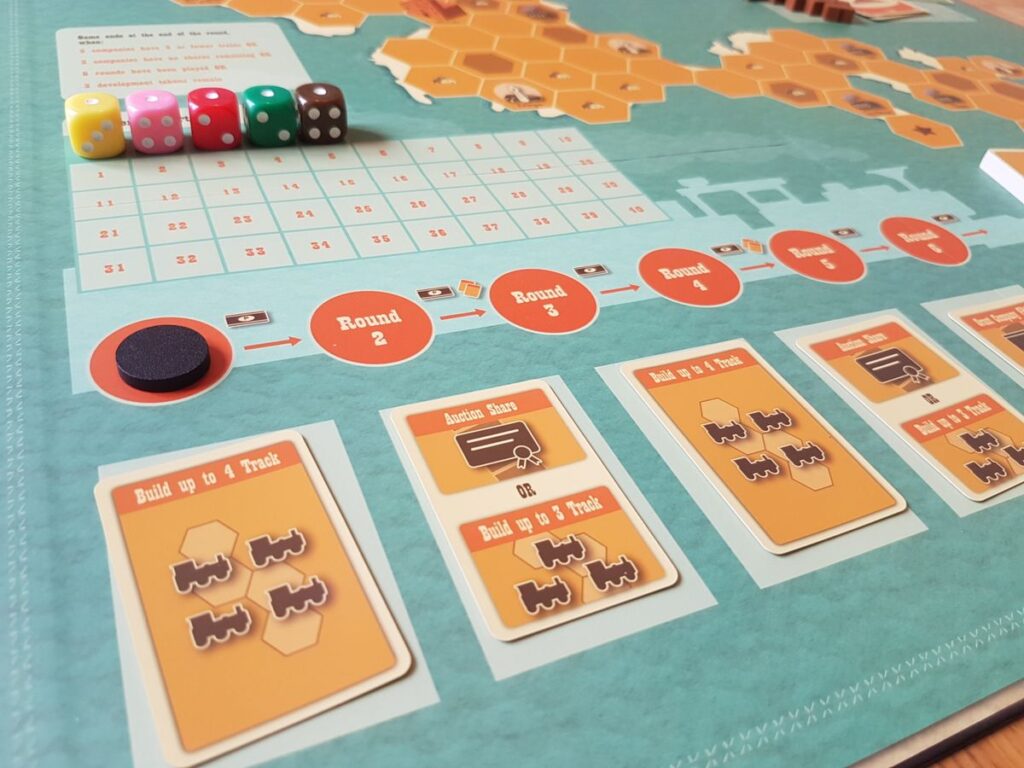
The rules are really easy to learn, and the game plays out nice and quickly. You’re probably looking at around an hour for four players to play from start to end. I really like how the game is set in the Philippines too. it struck me as an unusual place to set a game, but I like it. Something about it feels slightly exotic. Philippine artist Jesse Cabasan did a great job of that most difficult of tasks – making a hex-based train game look pretty.
If you like your train games to have no luck at all, look to one of the other cube rails games. Maybe something like Iberian Gauge might suit you better. But if you’re looking for something with more player interaction and a bit more bite than Ride The Rails, and if you just love that hot auction action, I think you’ll really get a kick out of Luzon Rails. It’s cube rails, but with its own distinct flavour, and the game balance is really good. Robin spent a lot of time refining the scoring and interactions, and it really shows. The game’s available to by through Gamefound for €30 right now, which is a fair price, given the huge board. I really like this game, and it’s another that’s going to stay on my slowly-growing cube rails shelf.
Review copy kindly provided by Robin David. Thoughts and opinions are my own.
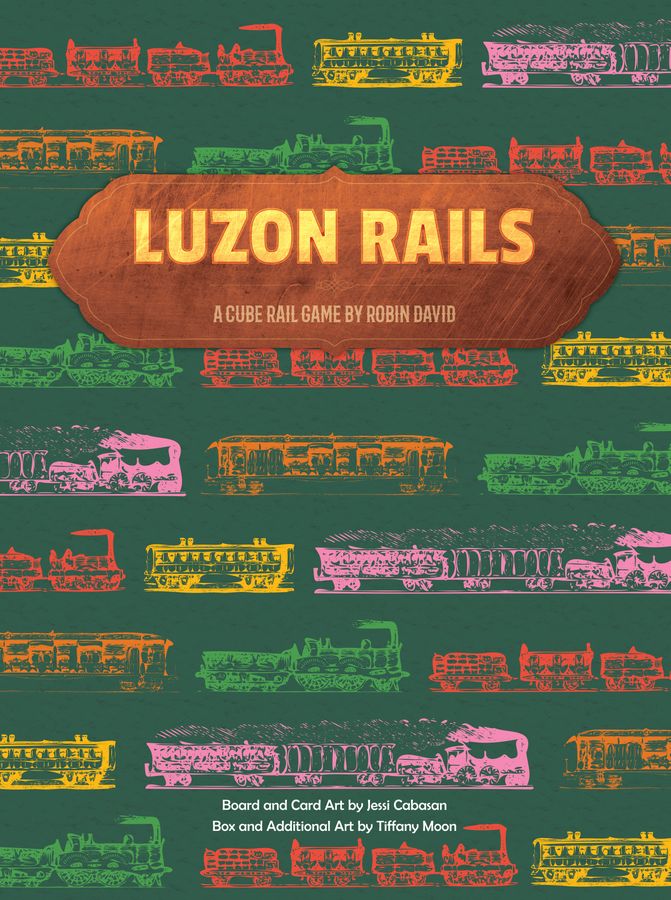
Luzon Rails (2021)
Designer: Robin David
Publisher: Self-published
Art: Jessi Cabasan, Tiffany Moon
Players: 3-5 (solo mode included)
Playing time: 45-85 mins







